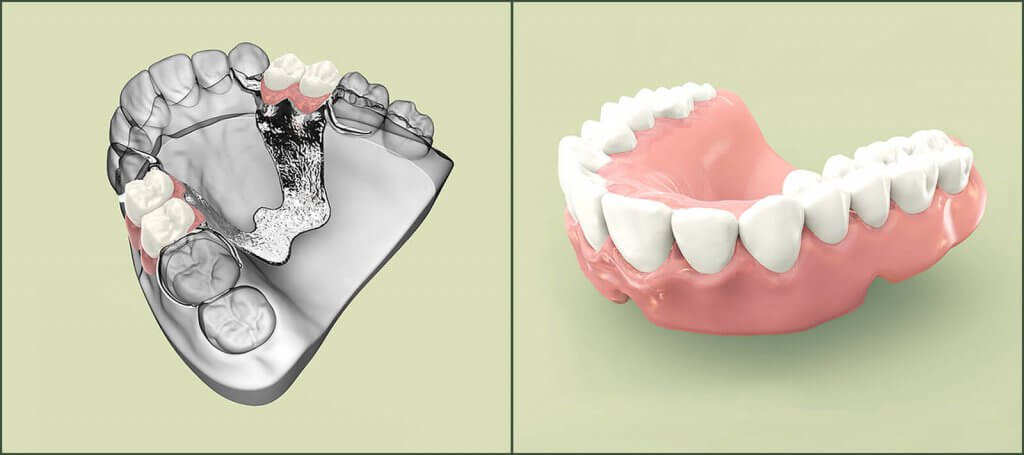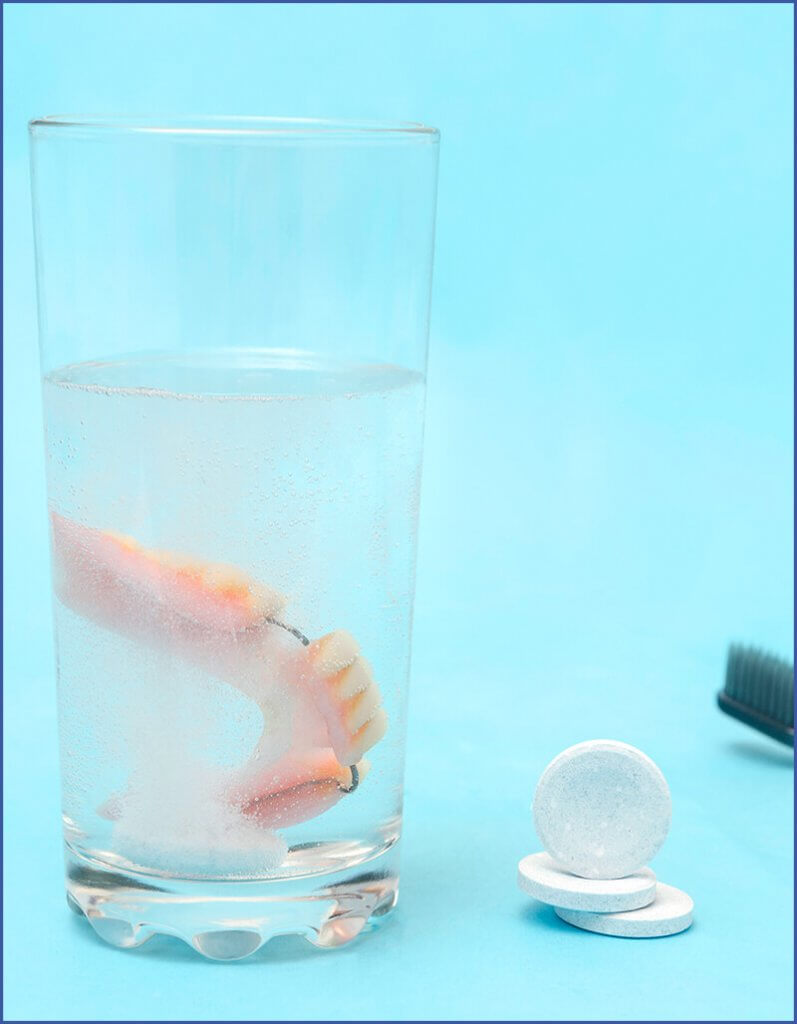Most people don’t like the idea of having removable dentures. They still think of it as an outdated, uncomfortable solution. However, even a denture can grant a beautiful smile, thanks to all the technological advancements in dentistry.

“Dentures can be used as a temporary or permanent solution to replace missing teeth”
– says Dr. Péter Dudás. While most people don’t fancy the idea of keeping their smile in a glass of water overnight, dentures have their advantages. “When compared to dental implants, dentures are a lot cheaper, easier to repair, and do not require any kind of surgery. They look natural and aesthetically pleasing. More importantly, dentures they fit nicely on shrinking gums, so they don’t allow the patient’s face to collapse due to missing teeth.”

Multiple or all teeth missing
Every denture serves the same purpose: to replace all the missing teeth on a jawbone. “If there are few teeth remaining, we can make a partial denture. This can clip on, or use small metal hooks to attach to the remaining teeth. It has a metal frame, and the teeth are made of acrylic.
These dentures are very comfortable and easy to fit, because they use attach to the healthy teeth.”

In case someone is missing all their teeth, a full denture is required. “An upper denture covers the entire hard palate, the gum, and a small part of the soft palate. A lower denture rests on the gum, so it doesn’t block the movement of the tongue. How they stay in position, is the real question here. When the denture is fitted it is kept in place by the muscles surrounding the area, and also the thin layer of saliva between the denture and the underlying gum. Therefore the upper denture is usually more stable than the lower, because it has more contact.”
 Looks like the real thing
Looks like the real thing

In order to receive a denture, one must make several trips to a clinic. The good news is that these visits are absolutely painless. Here is the breakdown of the entire process, by Dr. Dudás: “After the consultation we take an impression, so we can create a personalized tray for a functional impression. During this stage, the patient is asked to make different movements, so we can measure the exact size of the denture. This impression is later covered in wax, which helps us in designing the bite. The penultimate stage is when the technician inserts the artificial teeth, and creates the finalized denture from acrylic. The color, shape, and size of the teeth are discussed with the patient, to make sure it provides a natural look. Once the treatment is completed, no one will be able to tell the patient is wearing dentures.”
Removable dentures are amazing at replacing original teeth when it comes to speaking or aesthetics, but not when it comes to eating. A healthy set of teeth produce a masticatory force of 180 Newton/cm2, or more. A removable denture can only produce up to 25 Newton/cm2. The reason is simple: the palate is not as hard as a tooth. We recommend taking smaller bites, and chewing on both left and right side.
 Toothbrush? Sure. Toothpaste? Never.
Toothbrush? Sure. Toothpaste? Never.

Just like every replacement, dentures require proper cleaning as well. We recommend using denture cleanser tablets. These were designed to clean the denture without damaging it. Using a toothbrush is optional, but even if you do refrain from using toothpaste, as the particles in it may scratch the surface of the denture.
It is also recommended to have a dental checkup at least once a year, even if they don’t have any teeth remaining. Removable dentures were not designed to last for a lifetime. The jawbone changes all the time, making the denture less stable. A relining is recommended every 4 years, to make sure the denture can serve its purpose for a long time.